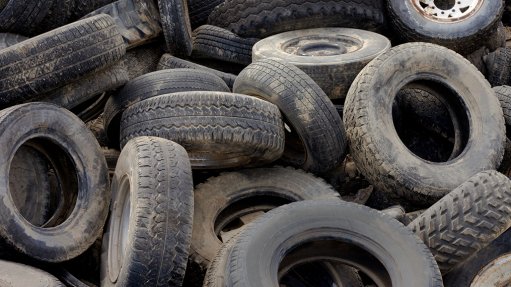Global renewable-energy commitments fall short of COP28 targets
Although Nationally Determined Contributions (NDCs) are key to decarbonisation, current NDCs only amount to 1 300 GW, or 12%, of the renewable-energy capacity needed to meet the objective of tripling renewable energy as set at the COP28 conference.
At COP28, nearly 200 countries pledged to triple the world’s renewable power capacity this decade, which is one of the critical actions to keep alive hopes of limiting global warming to 1.5 ˚C.
The International Energy Agency (IEA) finds in a new report that countries’ ambitions and implementation plans are not yet in line with the overarching goals set at COP28, but that countries still have opportunity in the coming months to develop clear plans for boosting renewable power.
The report, titled ‘COP28 tripling renewable capacity pledge: tracking countries’ ambitions and identifying policies to bridge the gap’, states that governments’ domestic ambitions correspond to almost 8 000 GW of globally installed renewable capacity by 2030.
This means that if countries were to include all their existing policies, plans and estimates in their new NDCs due next year – including revised ambitions for 2030 and new goals for 2035 – it would reflect 70% of the 11 000 GW of installed renewable-energy capacity that is needed by 2030.
The IEA explains that there is ample scope for countries to bring their NDCs in line with their current domestic ambitions, though implementation must nonetheless be accelerated and ambitions need to be improved further.
IEA executive director Fatih Birol says the tripling target is ambitious but achievable if governments quickly turn promises into plans of action. He adds that the IEA will continue to support governments around the world in efforts to achieve more sustainable and secure energy systems.
The report also finds that the amount of renewable-energy capacity added worldwide each year has tripled since the signing of the Paris Agreement in 2015. This is largely owing to policy support, economies of scale and technological progress, which have all driven down the cost of solar PV and wind by more than 40% over the period.
Global renewable capacity additions reached almost 560 GW in 2023, marking a 64% increase from 2022, to which China was the biggest contributor.
However, the IEA says key challenges, such as lengthy wait times for project permits, inadequate investment in grid infrastructure, the need to quickly and cost-effectively integrate variable renewables and high financing costs – particularly in emerging economies – remain.
To this end, the agency suggests that stakeholders help reduce financing costs by improving the bankability of renewable projects and improve long-term policy visibility. It also calls for greater project support in the pre-development phase and reduced inflation and exchange rate risks for new developers.
The IEA continues to track progress towards pledges made at COP conferences, including NDCs under the Paris Agreement.
With its data and policy recommendations, the agency continues to drive forward the implementation of climate goals.
Environmental organisation 350.org associate director Andreas Sieber comments that government's ambitions are far off target to meet the agreement to triple renewable capacity by 2030, however, the real world economy is outpacing politicians with rapid growth and falling costs of renewables. "We therefore have a huge opportunity to accelerate progress and triple global renewable capacity by stepping up the ambition on renewables in the next round of NDCs."
Article Enquiry
Email Article
Save Article
Feedback
To advertise email advertising@creamermedia.co.za or click here
Comments
Press Office
Announcements
What's On
Subscribe to improve your user experience...
Option 1 (equivalent of R125 a month):
Receive a weekly copy of Creamer Media's Engineering News & Mining Weekly magazine
(print copy for those in South Africa and e-magazine for those outside of South Africa)
Receive daily email newsletters
Access to full search results
Access archive of magazine back copies
Access to Projects in Progress
Access to ONE Research Report of your choice in PDF format
Option 2 (equivalent of R375 a month):
All benefits from Option 1
PLUS
Access to Creamer Media's Research Channel Africa for ALL Research Reports, in PDF format, on various industrial and mining sectors
including Electricity; Water; Energy Transition; Hydrogen; Roads, Rail and Ports; Coal; Gold; Platinum; Battery Metals; etc.
Already a subscriber?
Forgotten your password?
Receive weekly copy of Creamer Media's Engineering News & Mining Weekly magazine (print copy for those in South Africa and e-magazine for those outside of South Africa)
➕
Recieve daily email newsletters
➕
Access to full search results
➕
Access archive of magazine back copies
➕
Access to Projects in Progress
➕
Access to ONE Research Report of your choice in PDF format
RESEARCH CHANNEL AFRICA
R4500 (equivalent of R375 a month)
SUBSCRIBEAll benefits from Option 1
➕
Access to Creamer Media's Research Channel Africa for ALL Research Reports on various industrial and mining sectors, in PDF format, including on:
Electricity
➕
Water
➕
Energy Transition
➕
Hydrogen
➕
Roads, Rail and Ports
➕
Coal
➕
Gold
➕
Platinum
➕
Battery Metals
➕
etc.
Receive all benefits from Option 1 or Option 2 delivered to numerous people at your company
➕
Multiple User names and Passwords for simultaneous log-ins
➕
Intranet integration access to all in your organisation





















